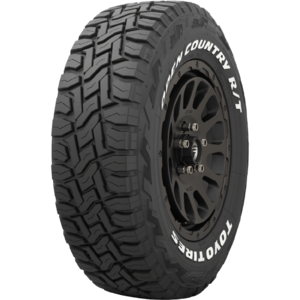Why Get 4WD tyres?
Highway tread: For both city and highway use
All-purpose: The tread isn't as harsh as some other tyres, but it may be used for both on and off-road driving.
All-terrain: However, it may not be as suitable as other tyre selections in certain conditions.
Mud-terrain: Tread with the most abrasive lugs. In muddy terrain, this is an excellent alternative; nevertheless, it may not be the greatest option in all situations
In the end, the type of 4WD tyre you choose depends on what kind of driving you intend to undertake and how often.
Outback
Bulldust is a notoriously difficult obstacle to overcome when driving a four-wheel drive vehicle in the outback. Bulldust, like sand, tends to be misunderstood at first.
When driving on this type of surface, never deflate your tyres. Rock-solid foundations can slam your chassis and puncture the sidewall of an underinflated tyre lurking beneath those powder-fine sections. Keeping a steady speed of 60 to 80 kilometres per hour and correcting any sideways slews with the steering wheel and additional gas are suggested.
Rocky terrain
Keep all four wheels on the ground at all times while travelling in difficult terrain with a 4WD vehicle. To avoid tyre slippage during acceleration, slow down. To avoid tears or damage to the sidewall of your tyres, avoid rubbing them against rough surfaces or sharp angles. If your wheels get stuck, you can try reducing your tyre pressure to free them up, but this should be done as quickly as possible.
Beach and sandy terrain
Keep your 4-wheel drive on the high range if you want to drive fast in sand. If the car becomes trapped in a sand hole, shift into low range.
Sand that is fine but compacted might make driving your 4WD feel like it is on a road. However, if the sand is loose and windblown, you may need to drive your automobile with partially deflated tyres at full throttle. Releasing the tyre's pressure can improve its buoyancy by allowing it to cover a larger area. Pressures of 102-110 kPa should be considered the extreme minimum. Refill your tyres at the local gas station as soon as you're able. Drive no faster than 80 kilometres per hour for the time being.
Muddy terrain
Try to keep all of your unlocked tyres on higher ground if your 4WD becomes stuck in some kind of mud. To get the car out of the hole, slowly depress the pedal while swerving the wheel side to side. Once you've gained some speed, a wide range of gears and a steady throttle should help. The tyre tread may get clogged with mud if you can release yourself, so be careful to check your wheel guards afterwards. If this is the case, it must be remedied as quickly as possible.
Final words
Make an appointment with your local tyre expert if you're intending on performing any significant 4WD driving. Whether you need a tyre rotation or a wheel alignment, our experts can make sure you have the right 4WD tyres in St Marys for the terrain you'll be driving over and check for any other difficulties.
Disclaimer: This is a generic Information & post; content about the services can be changed from time to time as per your requirements and contract. To get the latest and updated information, contact us today or visit our website.



Comments
Post a Comment